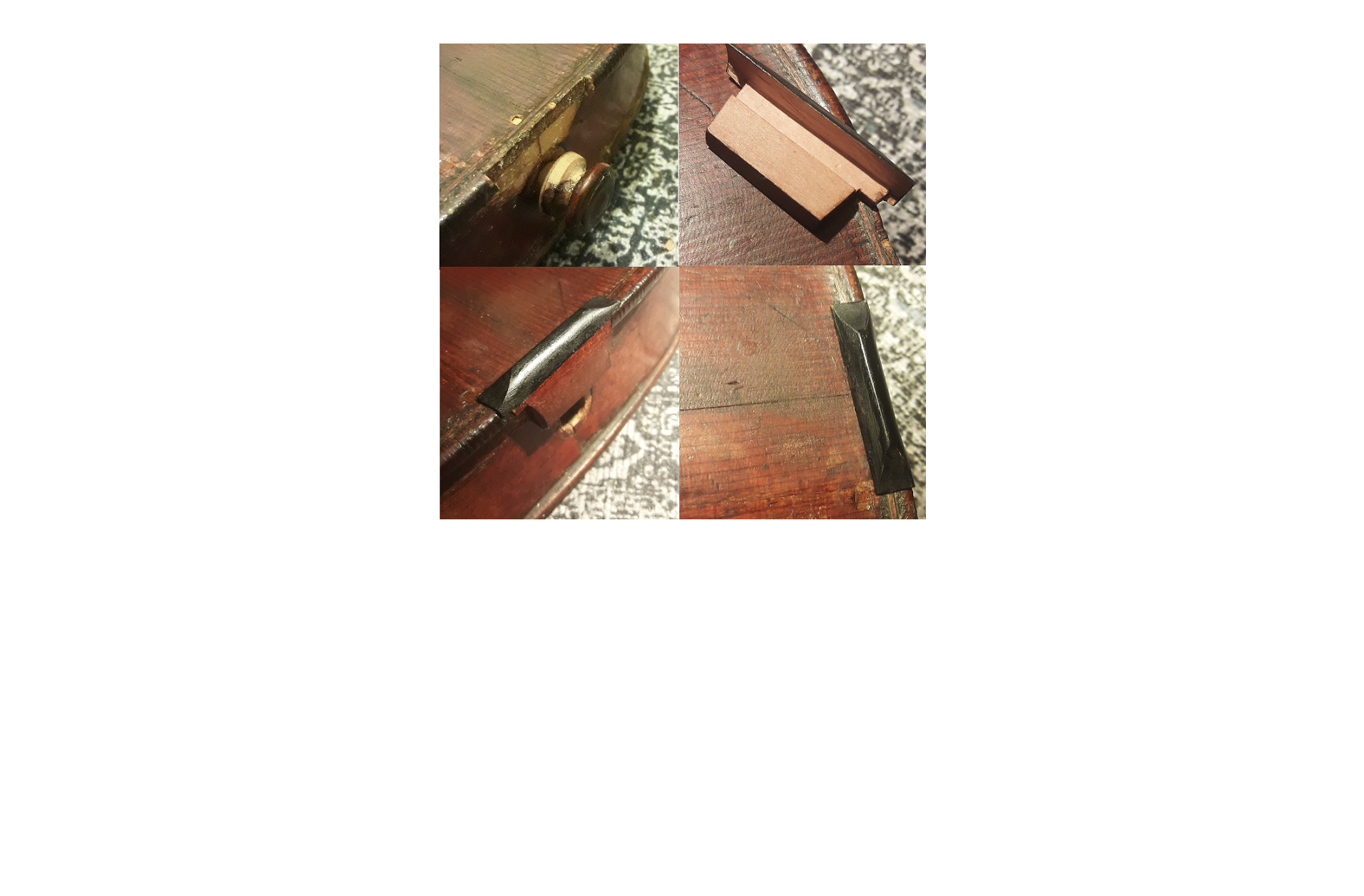Repair and Restoration
Restoration work is undertaken with a light touch approach, preserving as much original wood and varnish as possible, and avoiding unnecessary interventions while aiming to achieve robust and visually discreet repairs. If an instrument retains original historical features such as archaic saddle recesses or original necks, my preference is always to preserve these details, but when the need to adapt an instrument for modern use clashes with some aspect of this ideal, I favour an approach which offers as much ‘reversibility’ as possible. Please see below for some case studies of repair work I have carried out during the course of my career.

Above: Restoration of a fine but unattributed 18th Century pegbox, possibly by Gragnani. The old cracks had dried open and would not close with hot glue, necessitating the insertion of thin sections of carefully selected maple to return the pegbox to its former appearance. I completed the restoration by supporting the damaged areas with internal patches.
Above Images: A violin shaped jigsaw puzzle. Such repairs work best with a flexible approach, with modern techniques such as ‘tower’ clamps being employed alongside traditional crack clamps according to the demands of each individual join.

Above: Restoration of a severely impacted bridge area on the front of a violin by Mayr of Salzburg. The repair approximately follows the method employed by the Hill workshop, involving the inlay of individual sections of spruce into carefully excavated trenches.

Above images: Restoration of an area of worm damage on a violin by Nathaniel Cross. I used sections of original wood excavated while performing internal patching as matching stock to fill the external worm tracks.

The image above shows a detail from a replacement neck I installed onto an 1819 violin by David Stirrat. The original neck, which was attached in the baroque manner, needed to be replaced due to wear and the need for modernization. The new grafted neck has been morticed into the block in such a way as to avoid cutting into the table below the fingerboard, in this way preserving an original feature while providing the necessary over-stand for a modern set-up.

Above Images: The same Stirrat violin also retained it’s original early 19th Century saddle recess. Preserving this detail required the design of a new raised saddle in order to fulfil the requirements of a modern set-up.

Above Image: Reinforcing cleats inside an 1811 Thomas Kennedy viola. The studs are carefully fitted to avoid interfering with the inscription whilst offering internal support to the cracks.
Above: Major restoration of a 17th Century English violin. The internal repair work suggested this had last been restored in the early to mid 19th Century, possibly by a member of the Furber family.
When setting up, where possible I source original pegs and fittings appropriate to the age and style of the instrument. However, if none are to be found, as in the case of the above c.1680 English violin, then I make copies modelled after original examples. The above pegs were copied from examples found in a c.1680 John Hare violin.


